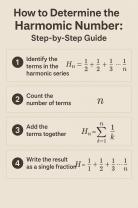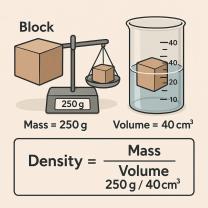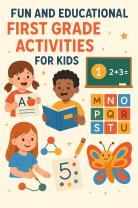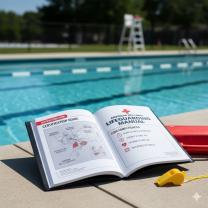What challenges do JHS mathematics teachers face in differentiated instruction?
Implementing differentiated instruction in junior high school (JHS) mathematics can be highly beneficial for students, as it tailors teaching methods to meet individual learning needs. However, it also presents various challenges for mathematics teachers. Here are some common challenges faced by JHS mathematics teachers when implementing differentiated instruction:
Diverse Student Abilities: Junior high school classrooms often include students with a wide range of mathematical abilities. Designing lessons that cater to varying skill levels can be challenging.
Time Constraints: The limited class time available for teaching mathematics can make it difficult to provide personalized instruction for each student. Teachers must find ways to balance differentiation with curriculum coverage.
Resource Limitations: Access to resources, such as textbooks, technology, and supplementary materials, can vary from school to school. Teachers may struggle to provide differentiated resources to meet individual needs.
Large Class Sizes: Teachers in junior high schools often have large class sizes, which can make it more challenging to provide one-on-one or small group instruction.
Assessment: Developing and grading assessments that accurately reflect students' individual progress can be time-consuming, especially when tailoring assessments to different learning profiles.
Professional Development: Some teachers may lack training in differentiated instruction techniques. Adequate professional development opportunities may be limited.
Behavioral Challenges: Managing diverse classroom behaviors and ensuring that all students stay engaged and focused can be a constant challenge in differentiated instruction.
Parental Expectations: Some parents may have specific expectations for their children's education, and meeting these expectations while differentiating instruction for various students can be a delicate balancing act.
Standardized Testing Pressure: The emphasis on standardized testing in many educational systems can create pressure to prioritize teaching to the test over differentiated instruction.
Curriculum Alignment: Ensuring that differentiated instruction aligns with the school's curriculum standards can be complex, as teachers must balance individualized learning with curriculum requirements.
Student Resistance: Some students may resist differentiated instruction, feeling uncomfortable with new teaching methods or the perception of special treatment.
Grading Challenges: Grading assignments and assessments that cater to different learning styles and abilities can be time-consuming and complex.
Planning Complexity: Creating lesson plans that accommodate various learning modalities and abilities can be demanding in terms of planning time and effort.
Feedback and Communication: Providing effective feedback to students and communicating their progress to parents can be more challenging in a differentiated classroom.
Differentiation Strategies: Identifying and implementing appropriate differentiation strategies for each student or group of students requires ongoing assessment and adaptation.
To address these challenges, JHS mathematics teachers can benefit from ongoing professional development in differentiated instruction techniques, collaboration with colleagues, and support from school administrators. It's essential to view these challenges as opportunities for growth and improvement in the pursuit of providing high-quality mathematics education for all students.
Challenges in Differentiated Math Instruction for Junior High School
Differentiated math instruction is the practice of tailoring instruction to meet the individual needs of all students. This can be a challenge in any grade level, but it can be especially challenging in junior high school.
One of the biggest challenges in differentiated math instruction for junior high school is the diversity of the student population. Junior high school students are in a period of rapid physical and emotional development. They also have a wide range of academic abilities and interests. This can make it difficult to differentiate instruction in a way that meets the needs of all students.
Another challenge in differentiated math instruction for junior high school is the time constraints. Junior high school teachers are often required to cover a lot of material in a short period of time. This can make it difficult to find the time to differentiate instruction.
Finally, junior high school teachers may not have the resources or training they need to effectively differentiate instruction. Differentiated math instruction requires teachers to have a deep understanding of math content and pedagogy. It also requires teachers to have access to a variety of resources, such as differentiated materials and assessment tools.
Tailoring Math Lessons: JHS Teacher Obstacles in Differentiation
Here are some specific obstacles that junior high school teachers may face in differentiating their math lessons:
- Lack of time: As mentioned above, junior high school teachers are often required to cover a lot of material in a short period of time. This can make it difficult to find the time to differentiate instruction.
- Lack of resources: Junior high school teachers may not have the resources or training they need to effectively differentiate instruction. This includes differentiated materials, assessment tools, and professional development opportunities.
- Classroom management challenges: Differentiated math instruction can be challenging to manage in a classroom with a wide range of student abilities. Teachers need to be able to provide individualized attention to students while also keeping the class on track.
- Pressure to standardize: Junior high school teachers may feel pressure to standardize their instruction in order to prepare students for high-stakes testing. This can make it difficult to differentiate instruction in a way that meets the needs of all students.
Meeting Diverse Needs: Addressing Challenges in Math Differentiation
Despite the challenges, there are a number of things that junior high school teachers can do to differentiate math instruction in their classrooms. Here are a few tips:
- Start by getting to know your students. This includes understanding their academic abilities, learning styles, and interests. Once you know your students, you can start to tailor your instruction to their individual needs.
- Use a variety of instructional strategies. There is no one-size-fits-all approach to differentiated math instruction. Use a variety of strategies to meet the needs of all learners. For example, you can use small group instruction, one-on-one instruction, and independent work.
- Provide students with choices. Give students choices about how they learn and what they learn. This can help to motivate students and engage them in the learning process.
- Use differentiated materials. There are a variety of differentiated math materials available online and in stores. These materials can help you to provide students with the support they need to succeed.
- Assess students regularly. Assessment is essential for differentiated math instruction. It allows you to track student progress and identify students who need additional support.
By following these tips, junior high school teachers can differentiate math instruction in a way that meets the needs of all learners.
Here are some additional tips for addressing challenges in math differentiation:
- Collaborate with other teachers. Collaborating with other teachers can help you to share ideas and resources for differentiated math instruction.
- Seek professional development opportunities. There are a number of professional development opportunities available on differentiated math instruction. Take advantage of these opportunities to learn more about how to differentiate math instruction in your classroom.
- Advocate for resources and support. Let your administrators know that you need resources and support to effectively differentiate math instruction. This may include access to differentiated materials, assessment tools, and professional development opportunities.
By addressing the challenges and taking steps to differentiate math instruction, junior high school teachers can help all students to succeed in math.













